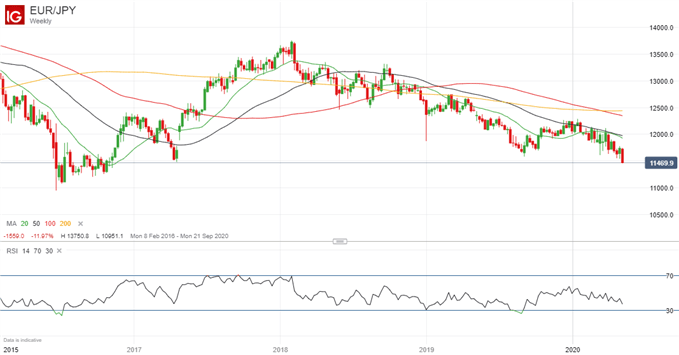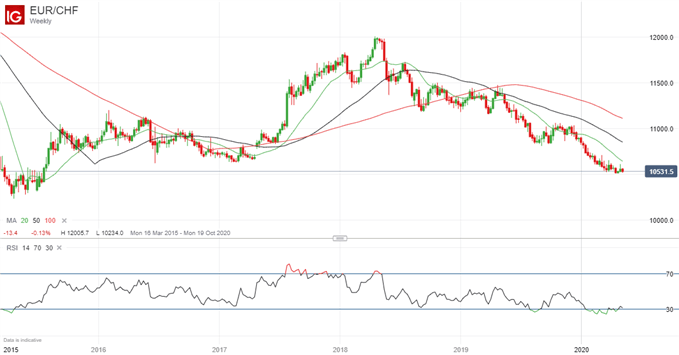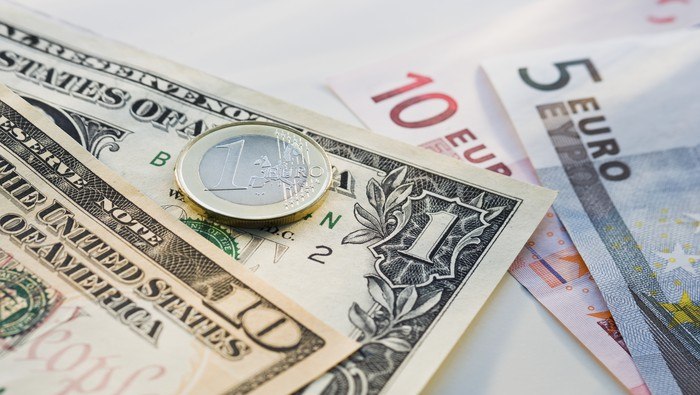EUR/JPY and EUR/CHF prices, news and analysis:
- Traders are highly negative towards the Euro at present, pointing to dire economic forecasts for the Eurozone, a negative German court ruling and demand for safe havens as the Covid-19 pandemic continues to weigh on activity.
- However, against two of those havens – the Japanese Yen and the Swiss Franc – it is close to major support levels on the weekly charts that could stem further falls, particularly if lockdowns are eased and sentiment improves.
Beware a Euro bounce
There are plenty of good fundamental reasons to keep selling the Euro at present but traders should watch out for important support levels on the weekly charts that could at least slow its decline against the Japanese Yen and the Swiss Franc.
In its latest economic forecasts published Wednesday, the European Commission predicted that the Eurozone economy will contract by a record 7.7% this year because of the Covid-19 pandemic, that inflation will almost disappear and that both public debt and budget deficits will surge. “Europe is experiencing an economic shock without precedent since the Great Depression,” commented Paolo Gentiloni, the European Commissioner for Economic and Financial Affairs.



That followed a German Constitutional Court ruling earlier in the week that gave the European Central Bank three months to justify buying bonds under its flagship stimulus program or lose Germany’s central bank, the Bundesbank, as a participant. It also followed a flight to the safety of currencies like the USD, JPY and CHF that are benefiting from concerns about the economic damage caused by the spread of the coronavirus.
However, as the EUR/JPY weekly chart below shows, the cross is now knocking on levels last seen three years ago and the lows there could provide at least temporary support.
EUR/JPY Price Chart, Weekly Timeframe (February 8, 2016 – May 6, 2020)

Chart by IG (You can click on it for a larger image)



While the price has dropped this week just under the 1.1485 low touched on April 17, 2017, it has yet to do so conclusively. Moreover, hopes are rising of an easing of lockdowns that might limit the economic damage caused by Covid-19 and lift traders’ appetite for riskier assets like the Euro.
The weekly EUR/CHF chart below shows that this cross has already dropped under its 2017 lows so is more bearish. However, there is still support for it at levels around 1.1023 last seen five years ago, some three months after the “flash crash”.
EUR/CHF Price Chart, Weekly Timeframe (March 23, 2015 – May 6, 2020)

Chart by IG (You can click on it for a larger image)
If you’d like to find out how central banks impact the forex market, and how to use news and key economic events to make trading decisions, check out these articles in our newly revamped education section.
--- Written by Martin Essex, Analyst and Editor
Feel free to contact me via the comments section below





